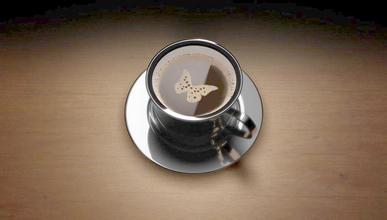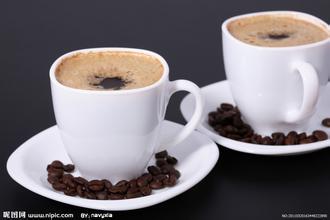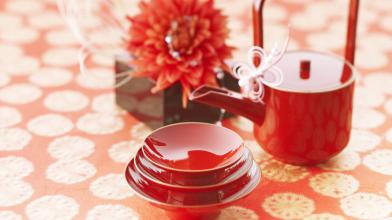Flavor description of Salvadoran coffee beans introduction to the grinding scale of the treatment method in the manor area
Flavor description of Salvadoran coffee beans introduction to the grinding scale of the treatment method in the manor area
One of the rarest Ethiopian coffee beans on the market is Yirgachaffe, which is exported to Japan and Europe but is rarely seen in the United States. This is because Dallmeyer, a German coffee roaster owned by Nestle, has established a close relationship with the growers of Yega Snow Coffee, thus obtaining the largest single supply of this kind of coffee beans, the Sidamo Gedeo region of Sidamo Province.
Today, Ethiopia is an important coffee producer, with about 12 million people engaged in coffee production and a major exporter of Arabica coffee beans in Africa. The high-quality coffee here is of excellent quality and is worth looking for. A variety of coffee cultivation methods can be found in Ethiopia: everything from wild coffee forests and semi-developed land to traditionally operated plots to modern plantations. About 50% of the coffee is grown at an altitude of more than 1500 meters.
In 1959, the Yega snow coffee producing area began to try the water washing method. After 1970, the jasmine fragrance of Yega was washed, and the lemon and citrus flavor was popular in Europe and America. It became a model of fine beans in Africa, and the sun treatment was gradually drifting away from Shifei.
However, there are always people who will miss the feeling of the wonderful wine in the sun, which was improved in 2006. In the second Gold Co-operative Coffee Competition held in Ethiopia, sun beans dominated the top three, killing and washing Yega.
Today, the exquisite method of tanning is becoming more and more mature. High standard elimination of bad coffee beans, reduce pollution sources, elevated net bed, special guard, uniform drying. Rich aromas of strawberries, citrus, peach and jasmine, red wine has been popular all the way up to now.
Ethiopia's Yirgacheffe coffee is one of the most unique coffee beans in the world today: it has a strong aroma of flowers, lemon, strong acidity but soft and smooth taste.
Like the little Jasper of Suzhou, although she is petite, she is gentle and delicate, sweet and lovely, and can attract thousands of favorites without any decoration. Medium baked Yega snow coffee has unique sweet aromas of lemon, flowers and honey, soft acidity and citrus flavors, fresh and bright on the palate.
[product name]: Ethiopia Yejasuffe (Ethiopia Yirgacheffe)
[quality rating]: WP Grade 2
[baking degree]: moderate baking is recommended (Medium Roast or City Roast)
[grade]: excellent
[particles]: ★ plump
[acidity]: ★★★★ slightly sour, dark chocolate aftertaste
[equilibrium]: ★★★★ is very stable
[flavor]: very unique, delicate and rich taste, with fruit and wild flavor of the wine.
[coffee producing areas]: Gedeo District, Sidamo Province, Ethiopia (EthiopiaSidamo)
[raw bean treatment]: washing and refining method
[special point]: the coffee tree originated in Ethiopia, which was originally a wild plant here. The name "coffee" comes from the Ethiopian town "Kaffa". In fact, many coffee trees in Ethiopia are still wild plants, and the coffee grown on this coffee tree is full-grained and slightly alcoholic.

Important Notice :
前街咖啡 FrontStreet Coffee has moved to new addredd:
FrontStreet Coffee Address: 315,Donghua East Road,GuangZhou
Tel:020 38364473
- Prev

Description of the flavor of Yejia Coffee Cochel washed coffee beans introduction to the grinding scale of the treatment method in the manor area
Yega Coffee Flavor description of the flavor of washed coffee beans in the manor area treatment grinding scale Yega Xuefei is a small town in Ethiopia, nearly 2,000 meters above sea level, is one of the highest coffee producing areas in the world. This has been a wetland since ancient times, Yirga means to settle down, and Cheffe means wetland, Lake Turkana, Lake Abaya, Lake Chamo
- Next

How to use Vietnam drip pot-Vietnam what kind of coffee needs to drip
How to use the Vietnam drip pot-Vietnam What kind of coffee needs to drip Vietnam coffee pot Use method 1. Disassemble the Vietnam drip pot and remove the sieve inside; 2. Pour the condensed milk into the coffee cup for later use; 3. Add the coffee powder into the drip pot and press it tightly. The more 10~15 grams per person; 4. Put the drip pot on the coffee cup and pour a small amount of hot water to soak the coffee powder.
Related
- Detailed explanation of Jadeite planting Land in Panamanian Jadeite Manor introduction to the grading system of Jadeite competitive bidding, Red bid, Green bid and Rose Summer
- Story of Coffee planting in Brenka region of Costa Rica Stonehenge Manor anaerobic heavy honey treatment of flavor mouth
- What's on the barrel of Blue Mountain Coffee beans?
- Can American coffee also pull flowers? How to use hot American style to pull out a good-looking pattern?
- Can you make a cold extract with coffee beans? What is the right proportion for cold-extracted coffee formula?
- Indonesian PWN Gold Mandrine Coffee Origin Features Flavor How to Chong? Mandolin coffee is American.
- A brief introduction to the flavor characteristics of Brazilian yellow bourbon coffee beans
- What is the effect of different water quality on the flavor of cold-extracted coffee? What kind of water is best for brewing coffee?
- Why do you think of Rose Summer whenever you mention Panamanian coffee?
- Introduction to the characteristics of authentic blue mountain coffee bean producing areas? What is the CIB Coffee Authority in Jamaica?

